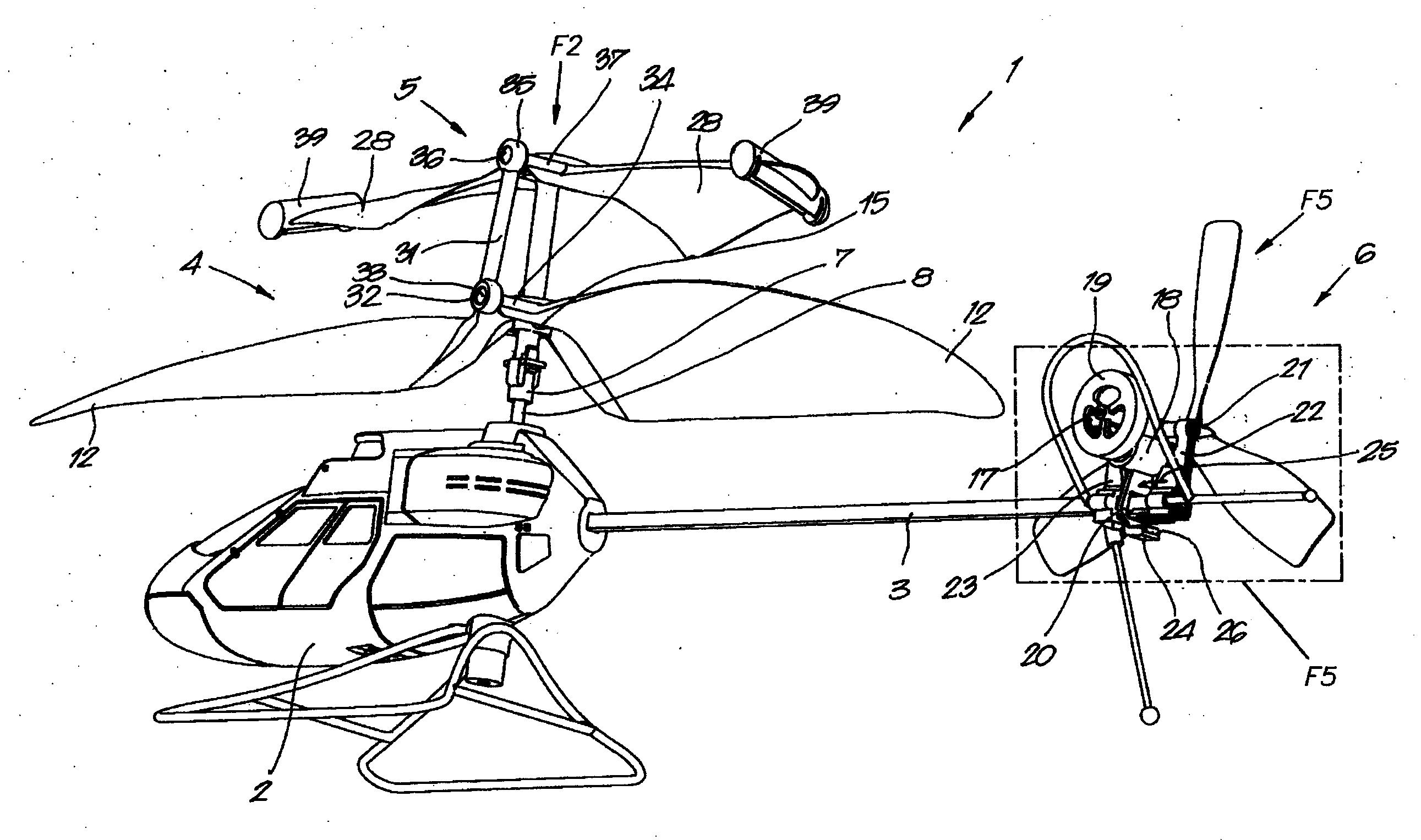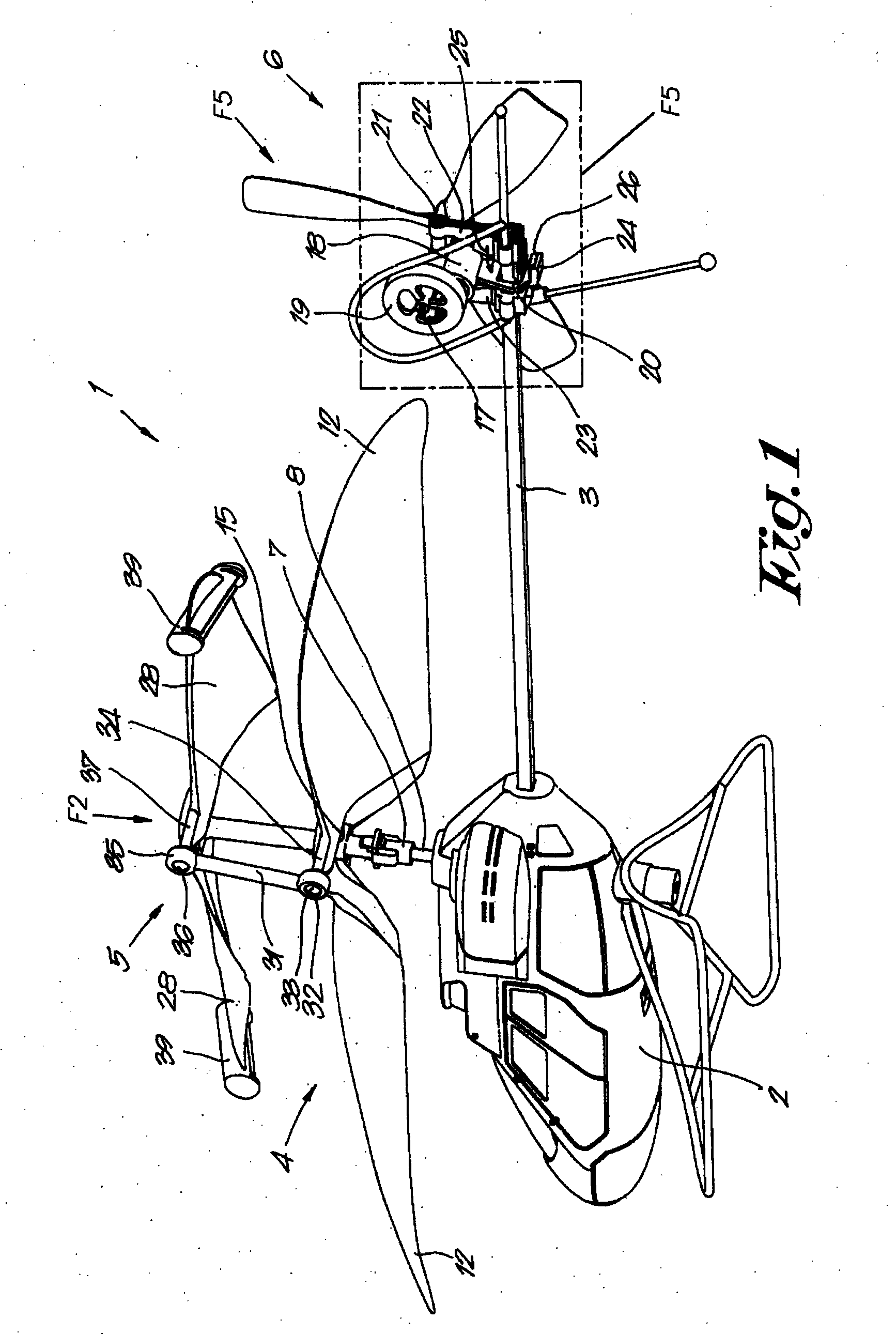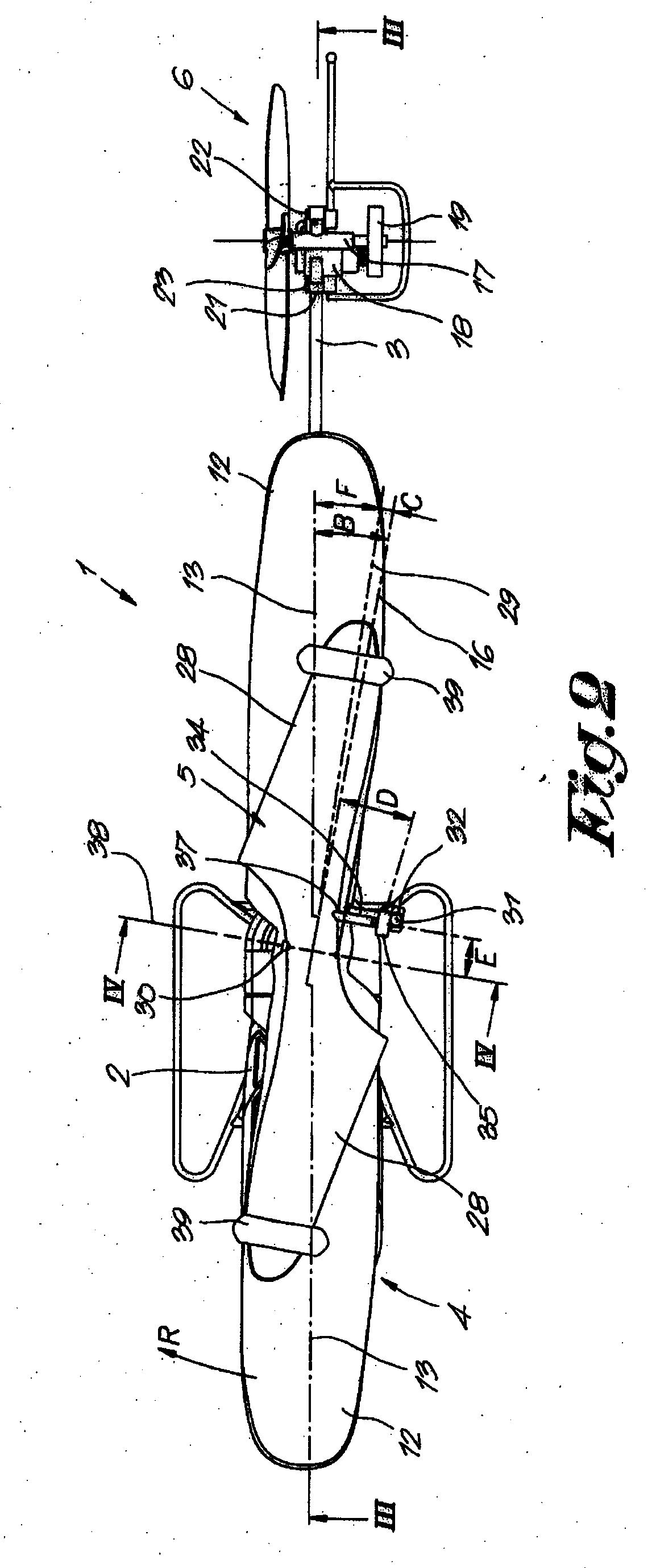Helicopter
a helicopter and helicopter technology, applied in the field of helicopters, can solve the problems of difficult control, unstable helicopter, uncontrolled movement, etc., and achieve the effect of relativizing itself relatively quickly
- Summary
- Abstract
- Description
- Claims
- Application Information
AI Technical Summary
Benefits of technology
Problems solved by technology
Method used
Image
Examples
Embodiment Construction
[0043]The helicopter 1 represented in the figures by way of example is a remote-controlled helicopter which essentially consists of a body 2 with a landing gear and a tail 3; a main rotor 4; an auxiliary rotor 5 driven synchronously with the latter and a tail rotor 6.
[0044]The main rotor 4 is provided by means of what is called a rotor head 7 on a first upward directed rotor shaft 8 which is bearing-mounted in the body 2 of the helicopter 1 in a rotating manner and which is driven by means of a motor 9 and a transmission 10, whereby the motor 9 is for example an electric motor which is powered by a battery 11.
[0045]The main rotor 4 in this case has two propeller blades 12 which are in line or practically in line, but which may just as well be composed of a larger number of propeller blades 12.
[0046]The tilt or angle of incidence A of the propeller blades 12, in other words the angle A which forms the propeller blades 12 as represented in FIG. 6 with the plane of rotation 14 of the m...
PUM
 Login to View More
Login to View More Abstract
Description
Claims
Application Information
 Login to View More
Login to View More - R&D
- Intellectual Property
- Life Sciences
- Materials
- Tech Scout
- Unparalleled Data Quality
- Higher Quality Content
- 60% Fewer Hallucinations
Browse by: Latest US Patents, China's latest patents, Technical Efficacy Thesaurus, Application Domain, Technology Topic, Popular Technical Reports.
© 2025 PatSnap. All rights reserved.Legal|Privacy policy|Modern Slavery Act Transparency Statement|Sitemap|About US| Contact US: help@patsnap.com



